Research distinction
Although impressive Native American earthworks such as Serpent Mound were once relatively common in the Ohio Valley, few remain. Society has largely plowed under and paved over the massive creations left behind by the region's ancient cultures. The structures, however, are not entirely lost, as architecture professor John Hancock has spent the last decade digitally restoring them for public viewing.
photo/Dottie Stover

Partnering with UC's Center for the Electronic Reconstruction of Historical and Archaeological Sites, Hancock has rebuilt three-dimensional animated models of the giant earthen outlines as part of "Earthworks: Virtual Explorations of the Ancient Ohio Valley," the centerpiece of a traveling exhibit that debuted at Cincinnati's Museum Center this summer.
photo/Dottie Stover

What do a jet engine and the human larynx have in common? The sounds made by each are determined by airflow. Ohio Eminent Scholar Ephraim Gutmark (left) and graduate student Chris Harris measure the aeroacoustics of a jet engine. Discoveries in this College of Engineering lab, however, are reaching far beyond reducing noise pollution. Work here is also leading to new surgery techniques in the department of otolaryngology, as well as new voice coaching methods at the university's College-Conservatory of Music.
photo/Lisa Ventre
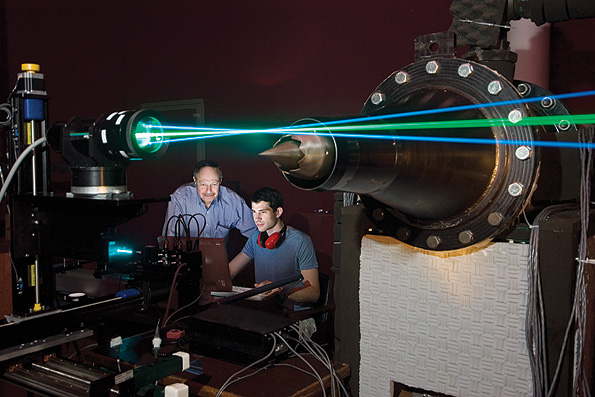
Matthias Tschöp studies the neuroendocrine and dietary aspects of obesity at UC's Obesity Research Center. Recent findings reveal that ghrelin, a hormone normally associated with food intake, may also impact memory loss from aging and Alzheimer's disease. Obesity researchers also uncovered evidence that suggests fructose, the sweetener in soft drinks and many other foods, actually adds more body fat than drinks sweetened with plain sugar.
photo/Dan Davenport

Graduate students at UC work and learn in an environment of impressive resources. Last year alone, UC attracted more than $330 million dollars in research funding and was ranked 22nd among public research universities in federal research expenditures. Administrators at UC want to boost total research funding to $600 million by 2009.
photo/Dan Davenport
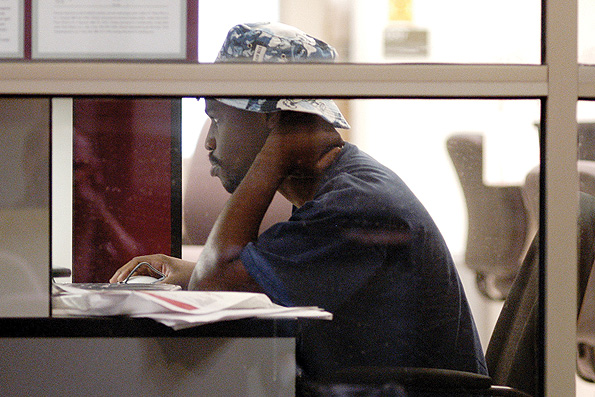
Dr. Timothy Broderick, MD '90, medical director for UC's Center for Surgical Innovation, spent 18 consecutive days under water in an effort to help NASA further develop robotic telesurgery that could one day save lives in space. To simulate the sense of isolation and further mimic weightless and oxygen-deprived conditions, Broderick and three astronauts spent nearly three weeks undersea in the Aquarius research station off the Florida Keys.
photo/courtesy of NASA
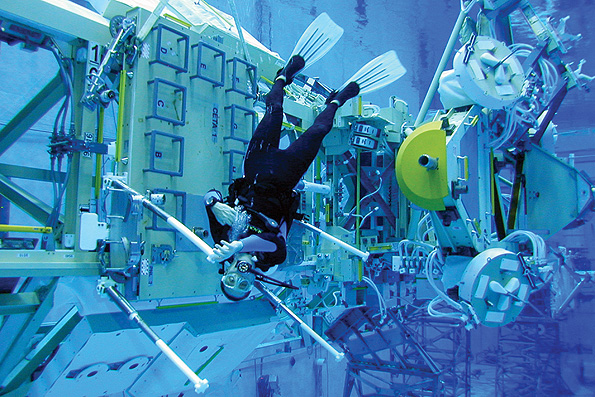
Nurse practitioner Sherry Stanforth listens to a child's breathing as part of a UC allergy study. Epidemiologists found that environmental tobacco smoke drastically increases an infant's risk for developing allergic rhinitis or hay fever by their first birthday.
photo/Dan Davenport

Senior research assistant Huixing Wu works in a laboratory in UC's Division of Pulmonary, Critical Care and Sleep Medicine. U.S. News & World Report ranks the University of Cincinnati 32nd nationally for its pulmonary disease program.
photo/Dan Davenport
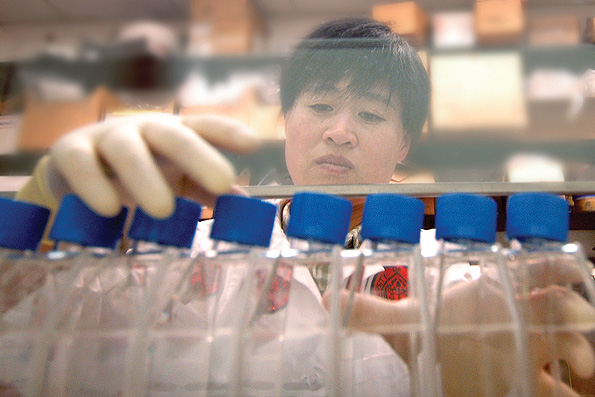
Research associate Michael Craig peers through a confocal microscope while assistant professor Jay Hove examines the magnified sample on screen at UC's Genome Research Institute. Hove is one of dozens of UC faculty participating in the university's new systems biology and physiology PhD program. Offering the first doctorate of its type in the Midwest, the program will train researchers to analyze and apply the enormous amounts of biological data being gathered by genetic scientists.
photo/Dan Davenport
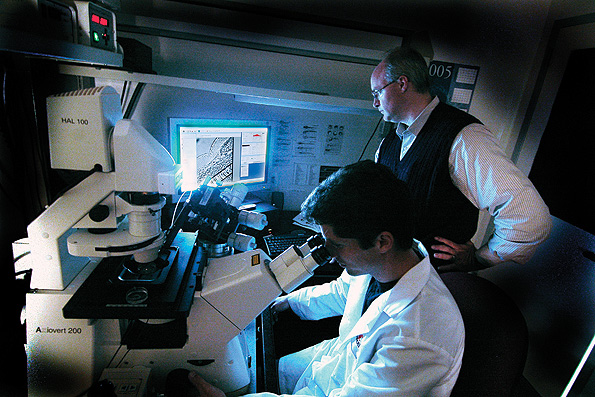
Victoria Surdulescu, director of UC's Comprehensive Sleep Medicine Center, and pulmonologist James Knepler study sleep patterns. Researchers from the center hosted a citywide sleep medicine series this year to increase awareness of sleep disorders and promote healthy sleep habits.
photo/Dan Davenport

Bibiana Bielekova, director of UC's Waddell Center for Multiple Sclerosis, uses magnetic resonance imaging of the brain, spinal cord and optic nerves to measure progression of the disease. The Waddell Center, the first comprehensive MS center in the region, was initiated with a $5 million gift in 2002 from Oliver and Virgilee, Ed '56, Waddell to bring world-class MS neurologists to Cincinnati.
photo/Dan Davenport
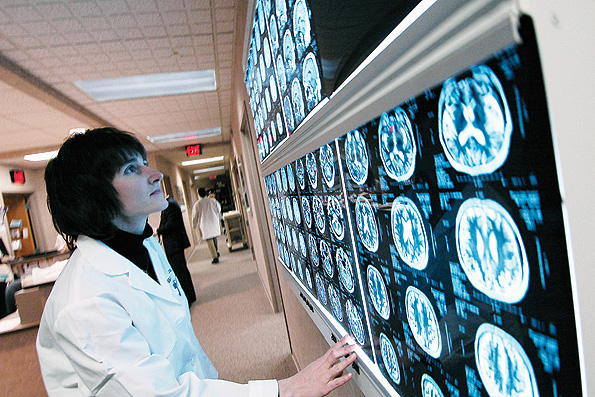
Next gallery | Academic excellence
Or jump to:
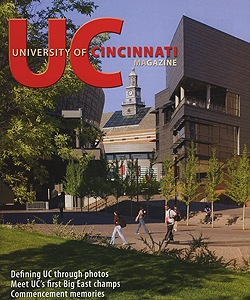
 Past Issues
Past Issues